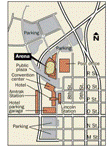Community and Regional Planning Program
Date of this Version
2016
Abstract
Estuarine geomorphology worldwide has greatly changed in the Anthropocene due to intensive human inferences in river basin and within estuary, which has received increasing global concerns. Here, recent morphodynamic evolution of Jiuduan Shoal (JDS), the largest uninhabited island in the Yangtze (Changjiang) Estuary, and associated controlling factors were analyzed based on unique high-resolution seasonal-surveyed bathymetric data during 1998–2014. It can be indicated that JDS presents novel 12 and 48 months fluctuations though significant accretion was detected on high flats above −2 m. Meanwhile, morphodynamic evolution of JDS during 1998–2014 was divided into three stages: significant siltation on land-ward half of north JDS and expanding of Jiangya Shoal (JYS, part of JDS) tail, but less accretion at high flats from 1998 to 2002; continuous variations of JYS and reshape of seaward JDS with erosion band and heave appearance from 2002 to 2006; retentive alteration of JYS but recovery of erosion band and heave, together with redistribution of sand between high and low flats on seaward JDS after 2007. Moreover, river discharge could be likely the key factor controlling periodic characteristics of recent JDS evolution. Deep waterway project (DWP) dominates area increase of JDS by inducing accretion in north edge and south edge of Lower Shoal between 1998 and 2014.
Included in
Civil Engineering Commons, Environmental Engineering Commons, Hydraulic Engineering Commons, Hydrology Commons, Water Resource Management Commons


Comments
Published in Continental Shelf Research 124 (2016), pp. 83-94.
doi 10.1016/j.csr.2016.05.011